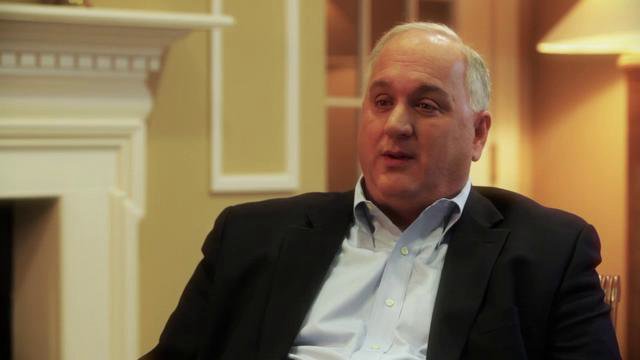Exploring the future of senior living with Tom Grape, CEO of Benchmark Senior Living
At the ALFA convention I had a chance to have lunch with Tom Grape, the CEO of Benchmark Senior Living. Sitting with senior living CEO’s is a huge privilege. When I get these meetings I have several areas I like to explore:
- What they are doing that is new, inventive or cool
- Challenges they face
- Opportunities they see
- How the view the future
Each of these interviews is a bit different and sometimes we don’t hit all of these topics and, frankly, sometimes they share perspectives, but ask me not to write about them. In some sense this may seem unfair, but honestly it helps me to have a better picture of the industry and write better articles.
Benchmark Senior Living
Benchmark Senior Living is based in Wellesley, Massachusetts. Their market focus is limited to the New England region. They operate 50 senior living communities that provide independent living, assisted living and memory care. Their portfolio also includes 2 CCRC’s. The target market space is middle to high income. They are particularly focused on providing personalized services that markedly improve each resident’s senior living experience.
Four Big Things
The biggest share of my time with Tom was spent exploring the future of senior living. He sees four areas that will be particularly important for senior living providers to be watching and working on.
1. More Demanding Consumers
For pretty much the entire history of senior living, consumers just took what was offered (or didn’t take it and just stayed home). The emerging cohort of seniors will ask communities to provide higher levels of services. They will have a higher expectation of what good or great customer service looks like. Finally, they will expect promises and commitments to be kept. Promising blue sky in the marketing and sales process will become promises that will have to be kept.
2. Increasing Industry Sophistication
This increasing sophistication will span a number of areas:
- There will be increasing amounts of data available to providers and developers. That data will allow operators to better understand what is working and what is not. Some will be internal data that will be company specific but there will be better and more sophisticated industry data.
- Wi-Fi is becoming more pervasive, but it will need to be more than just available. Residents will need and embrace technology classes. For instance Benchmark has been offering classes on how to use the internet and currently more than 75% of their residents are on the internet at least once a week.
- Resident monitoring technology will get better and more sophisticated. It will include things like active tracking and monitoring of activity levels and other functions such as monitoring pulse, temperature and hydration levels.
- Technology will be more pervasive in the delivery of customer service. This could include interactive pads or touch screen televisions that will allow residents to know what is going on in the community or instantly order additional services.
- Residents will be able to choose bundled service packages that are customized to the their specific needs. They will also be able to take an a la carte approach to services. Tom noted that this is already well under way because of increasing age and acuity.
3. More Variety of Services
Currently senior living communities struggle with how to best provide services and how to charge for them. The future will see a bigger menu of choices and ways to pay for them.
While I don’t normally like the cruise ship analogy, in this case it fits. You start with renting a cabin (unit) that can range from tiny and inside to something luxurious with a fabulous view. You can then choose to not purchase any additional services or you can go all-in with excursions that can touch $1,000 per person. Because of age and acuity creep there will be more variety in how services are sold.
What has happened is that what was once thought of as a full complement of services (the best/most we could do) looks more like a starting point. We will see more variety in terms of what providers are able and willing to provide. In some cases it will be defined by state regulation and in other cases it will be up to the provider to decide what will and won’t be provided and how much they can and should charge for them. Providers will make strategic decisions about how those services will be provided, using internal resources or outside providers.
4. Variety of Real Estate Choices
Perhaps one of the more perplexing aspects of senior living is the lack of differentiation in what is offered. Today we have perhaps three options:
- Very High End
- High End to High Middle Market
- Barely acceptable to terrible.
But imagine having a choice that would look more like what hotel chains do. For example Marriott offers a variety of options that ranges from the Ritz Carlton for those with luxury tastes and budgets on the high end, to Fairfield Inns for those with more modest tastes and budgets. Yet even the Fairfield experience provides real quality and value.
Tom Grape also expects to see more urban, mixed use and other property types that offer the same variety of choices consumers have had throughout their adult years.
That’s Tom’s view. What do you think?
Steve Moran









What Tom is missing is the medical morbidities these consumers have is crippling the industry. They are serious and can not be measured in a CREEP model. The sons and daughters want skilled care in a hotel setting on a 2500.00 per month price tag…. Then the industry makes that promise. Results, a disaster!!! Bruce Bedard
Hi Bruce:
I am not quite sure how they are crippling the industry. We certainly do seem to see two significant models in the industry; the more traditional social model and the emerging medical model. Both seem to be doing pretty well. I can see the appeal of the medical model particularly for seniors who would otherwise need skilled care. The cost is lower, the environment is more homelike and often they get more staff interaction day to day.
I guess I am in particular puzzled by the idea that people expect medical model care $2,500 a month. I rarely see rates those low even in social model assisted living.
Maybe Tom will also weigh in.
Steve
I understand what you are talking about Bruce and we in the independent living are seeing the medical acuity of inquries and incoming residents continuing to rise. Weekly I have families calling that don’t want to pay for assisted living, don’t think their parent needs care or can’t afford without Medicaid which does not pay for independent and most of the ALFs in our area (metropolitan Portland Oregon) only take after several years of spend down. I have families calling who are thrilled with the price of our one bedroom cottage that is less than $1200 month but than we find out that the parent needs services from our in-home care agency including meals delivered, med management, bathing assistance, daily checking, personal care, etc and the monthly cost is now similar to assisted living. The consequences for senior independent living is that that resident turnover occurs in a short period of time and the family is faced with moving a family member again even if it is to higher level of care on our own campus. It has become harder for independent living to maintain high occupancy also. Luckily we added our own licensed in-home care more than 6 years ago and 20% of our residents use it. My census would be horrible without that added level of care.
To Tom’s great comments (and your reply, Steve), I would add that the future cohorts will demand services in more varieties of settings, especially at home. That will require developing and providing aging support services outside the institution. It’s the old bricks-and-mortar model vs. the services and capabilities model. I think it’s a both-and opportunity, but it requires providers to decide that they are about supporting and promoting quality of life as people age and not just facility operators and real-estate portfolio managers. It will mean developing new relationships with other community providers, including the medical community, to provide an integrated and seamless suite of services that are easy to navigate, promote high-quality outcomes and provide good value at multiple price/cost points. Big challenges, great opportunities. Thanks for the conversation.
~Tim
Steve:
At any point during your time with Tom Grape, did he mention the challenges associated with recruiting and retaining qualified staff? Those who would buy into these dazzling plans – so to impress the “emerging cohort of seniors will have a higher expectation of what good or great customer service looks like. Thank you.
Hi did not, but it is a great question.
Steve, great article and interview with Benchmark who is always cutting edge and in touch with the mature market. One of the first communities to recognize the need for dementia training and the importance the role of dementia education plays in the delivery of service. I also agree we will see more and more technology services offered to service the mature market and senior communities will all need these services if they wish to stay competitive.
National Council of Certified Dementia Practitioners
International Council of Certified Dementia Practitioners
[email protected]
Hi Sandra
Thanks so much to contributing to the conversation.
Steve